Custom columns in Google Ads are a type of custom dimension that allow advertisers to track additional information about their campaigns and performance beyond the standard metrics provided by the platform. Their purpose is to help advertisers gain deeper insights into their audience and campaigns, and to make data-driven decisions that can improve the overall performance of their digital advertising efforts.

Overall, custom columns in Google Ads provide a flexible and customizable way for advertisers to track key metrics and gain deeper insights into their audience, campaigns, and performance.
Want to make more revenue?
Table of Contents
There are several types of custom dimensions available in Google Ads, including:
- Campaign-level: These custom columns track information at the campaign level, such as the target audience, ad group, or campaign type. They can help advertisers understand how different campaigns are performing and identify areas for optimization.
- Ad-level: These custom columns track information at the ad level, such as the headline, description, or call-to-action. They can help advertisers understand which elements of their ads are driving the best results and inform decisions about ad copy.
- Keyword-level: These custom columns track information at the keyword level, such as the search term or keyword match type. They can help advertisers understand which keywords are driving conversions and inform decisions about keyword targeting and bids.
- Landing page-level: These custom columns track information at the landing page level, such as the page URL or page content. They can help advertisers understand which landing pages are driving the best results and inform decisions about landing page optimization.
- Customer-level: These custom columns track information about the customer, such as their location, behavior, or purchase history. They can help advertisers better understand their audience and target them more effectively with relevant advertising.

Here is a step-by-step guide on how to set up custom columns in Google Ads:

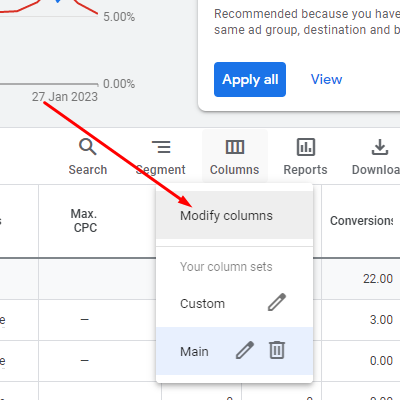
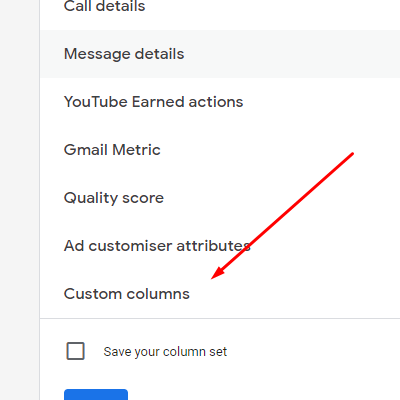
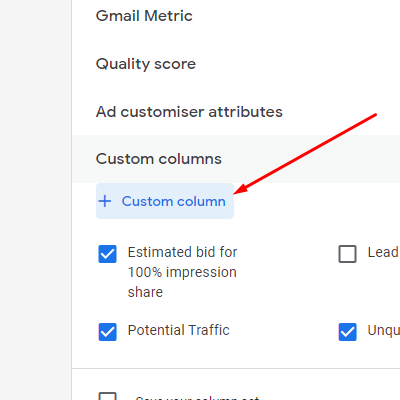
-
- Go to the AdWords interface and click on the “Tools & Settings” dropdown menu.
- Select “Measurement” and then “Custom Columns.”
- Click on the “New Custom Column” button.
- Enter a name and description for your custom column.
- Select the level at which you want to track the custom dimension (e.g. campaign, ad, keyword, landing page, customer, etc.).
- Choose the type of data you want to track (e.g. text, number, date, etc.).
- Select the type of aggregation you want to use for the custom dimension data (e.g. sum, average, etc.).
- Click the “Save” button.
Want to make more revenue?
Potential Traffic
What does it do?
Based on the number of impressions you have received and the impression share you have, it calculates if you were running at 100% impression share, how many impressions you could have.
How does this help?
No matter the size of the account, you need to make priorities. When you compare your keywords/campaigns, you can easily identify where to spend your time to get the most impressions.
How to create it. Type:
Impr. / Search impr. share

Estimated bid for 100% impression share

It will roughly work out how much you will need to bid to get the highest possible impression share. Note in competitive markets it is impossible to get 100% impression share, but this will get you the most impressions.
How does this help?
For a lot of keywords, you’ll find the estimated bids are not available, that’s when you use this metric.
How to create it.
Avg. CPC / Search impr. share
Want to make more revenue?
A column with only 1 conversion action
What does it do?
Say you have 3 conversions.
- Purchase
- Subscription
- Contact Us
You might only care about the purchases at this moment in time. You can use the segment, but it expands the viewing space especially if you have a lot of conversions.
How does this help?
This will allow you to isolate the conversion for the specific action.
How to create it.
- Type in All conversions.
- On the right you’ll see the filter column.
- Click Conversion action.
- Then select the conversion you want and save.
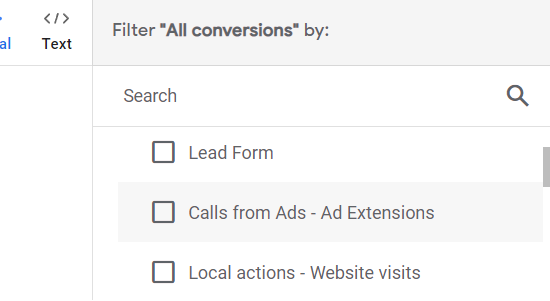

It will look somthing like this
Impression Conversion Rate
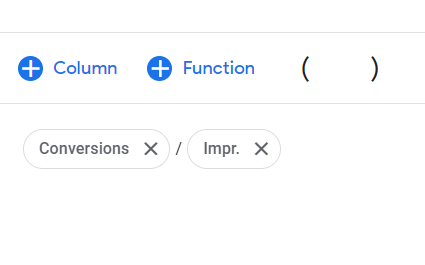
When evaluating your successful ads, you frequently encounter a dilemma between an ad with a high CTR and one with a higher conversion rate. To simplify the process of determining a clear winner, you can use a custom column that combines both CTR and conversion rate into a single metric: “Impression Conversion Rate”. This metric calculates the number of conversions per 100 impressions, taking into account both CTR and conversion rate, and providing a single score for comparison.
Want to make more revenue?
Google Ads - How Am I Doing Compare To My Competitors
What does it do?
Allows you to check what your impressions share is compared to a previous period, or in other would to see how many users get to see your ads.
How does this help?
This will help to understand where you need to work harder, what your competitors are missing and explain lower impressions.
How to create it.
- change the data format to Percent %.
- Type in Search impr. share.
- On the right you’ll see the filter column.
- Click date range & add filter.
- Then select custom & apply
- Start date as
- report range start day, shift date subtract 1 year.
- End date as
- report range end day, shift date subtract 1 year.
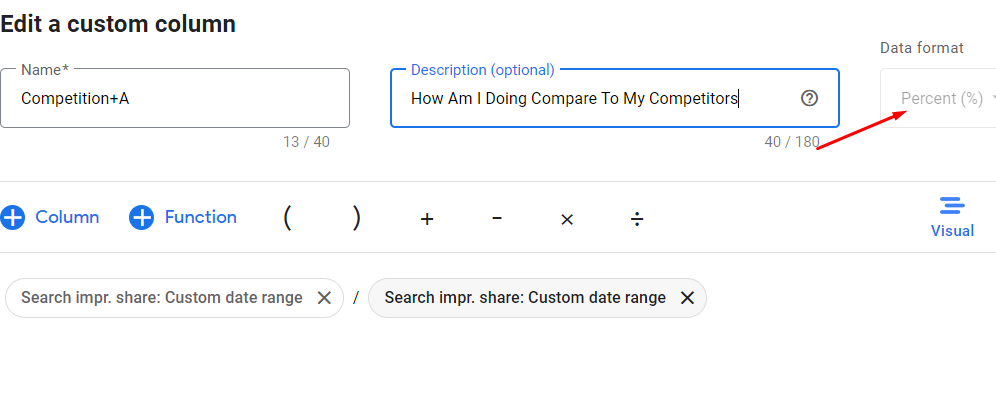
If the value returned is above 100% then you are doing better than the previous period. Also, this is based on annual data, you can change the date and subtract parts to whatever you like.
Device Custom Column
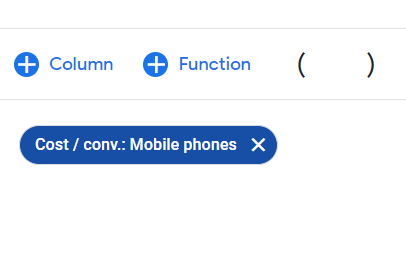
Easily see at a glance how mobile is doing, just pick a metric, I’ll use CPA so I’ll type in
Cost / conv.
Then from the filters on the right filter column click Device.
Mobile phones, save.
Want to make more revenue?
How Do I Get ROAS and Profit on Google Ads
If you don’t know the cost in percent then you can use:
Gross Profit Conv. value – cost
If you do know roughly the cost (I used 25% in mine):
Net Proft (Conv. value * 0.25) – Cost
Revenue per click Conv. value / Clicks
ROAS Conv. / Cost

Maximum estimated clicks
(impressions / impression share) * CTR
Maximum estimated conversions
(((impressions / impression share) * CTR) * Conv. Rate) * value / conv
Total estimated impressions lost
(impressions / im (impressions / impression share) – impressions
pression share) * CTR
Want to make more revenue?








